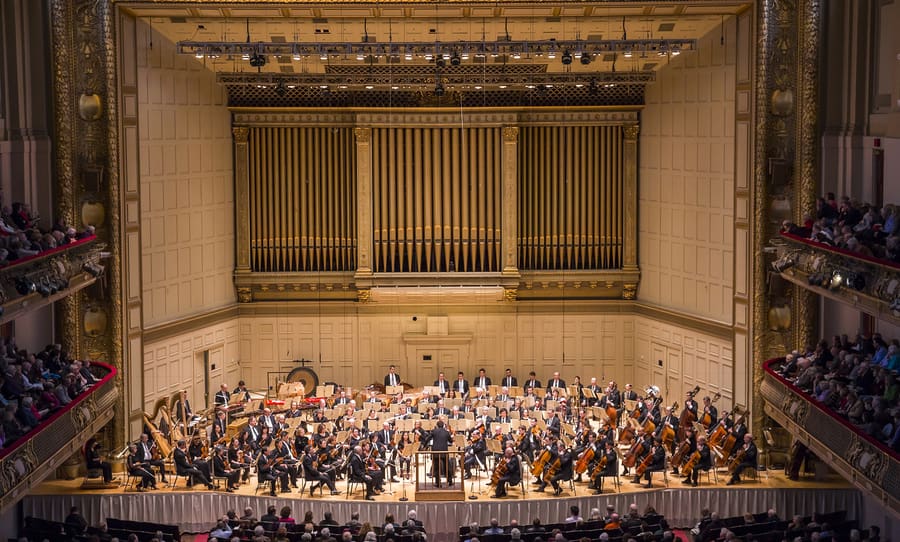Sound recording has developed in fairly close parallel with popular music in the last six decades or so. And as such, it’s no coincidence that the majority of information about recording refers to rock and pop projects. When you think about it, this scope of sound sources – vocals, guitars, keyboards/pianos, drums – is very narrow.
When listening to lush, orchestral recordings, it’s easy to imagine that these happen in extremely high-priced recording studios, with a mind-boggling array of equipment and no shortage of space. Often, that is exactly the scenario.
There is an increasing call, however, to track cinematic strings in a more budget-conscious way, where space and the requisite facilities may be in short supply. Knowing your options when recording smaller orchestral ensembles or solo instruments can give you the power to add real colour to your productions.

You don’t need a cathedral-sized room for recording orchestral instruments – you can attain the right amount of lusciousness and space with smart techniques and a lateral approach.
Woodwind and Brass
Lumping two massive instrumental categories such as woodwind and brass together is essentially unfair, but they do have similarities which can help when considering miking techniques.
The unacquainted may be excused for thinking that the sound comes from the bell of the instruments. And while it is loud there, it definitely won’t offer up the complete picture of the instrument’s character. The sound of a woodwind or brass instrument blooms at some distance from the source, so if the space permits, best to back off.
Microphone choices for these kind of instruments are many and varied, but for the louder and more aggressive instruments in these families (think trumpet and saxophones) a ribbon mic like the Royer R121 is uniquely placed to capture the dynamic variations and frequency spectrums that these instruments offer up. Ribbons smooth out the tops in a way that most condensers and dynamics don’t, thus acting as a counterweight for the bitey attacks that are prevalent in the horn section.
Taming Strings
Orchestral strings have incredibly wide dynamic ranges, and huge tonal variations available to them, depending on the technique employed. Therefore, microphones that are capable of enhancing the musicality of a sound source should be the go to for strings. Ribbons again are suitable for this task, but the darkness of their frequency response may not be apt to represent the brilliant upper registers – of the violin especially.
Large diaphragm condensers like the Neumann M 147 eat up this high end detail with ease. This flavour of mic is also a favourite on vocals and it’s no surprise – they are best at presenting complex sonic envelopes and frequencies responses with realism and nuance.
Not all large diaphragm condensers are created equal, however, so beware. Lower quality models bump up the top end in an unnatural way, which can inadvertently boost unwanted nasal qualities when recording orchestral instruments like strings.
Setting Up and Miking
The position of microphones will largely depend on space available and equipment at your disposal. If you have a small space in which to work, consider the possibility of a simple stereo pair using the XY or ORTF configurations. Close-miking orchestral instruments is often not desirable – remember that these instruments are made from natural materials and designed to fully bloom in a chamber or concert hall, not three inches away from the body of the instrument.
If you’re working with musicians that have trained in an orchestra or small ensemble, they will also be attuned to balancing their volumes in relation to the other players in the group. A less-is-more approach to miking will help you to capitalise on the group’s ability to mix their own sound in as natural a way as possible.
Close-miking is possible of course, and results can be fantastic. Much consideration should be given to placement in this scenario though. Manipulating axis’ and polar patterns can be incredibly effective in unlocking tonal possibilities, and should be explored thoroughly.
Instruments with agile dynamics and powerful volume output – like the aforementioned horn section – can be tamed with off-axis approaches. And if you have the space, a blend between close miking and stereo pair options can provide a deep palette from which to pull sounds in the mix.
It’s not necessarily the space and resources that make the difference in capturing orchestral instrumental performances – just a slight change in approach. Those used to pulling tones for a rock band may be used to using many mics at close proximity; but to get the best out of horn section or string quartet, less mics with more ambience might be the more tasteful method.
In any case, exploring your microphone locker with fresh ears, and being patient with placement and technique will benefit all of your sessions.


